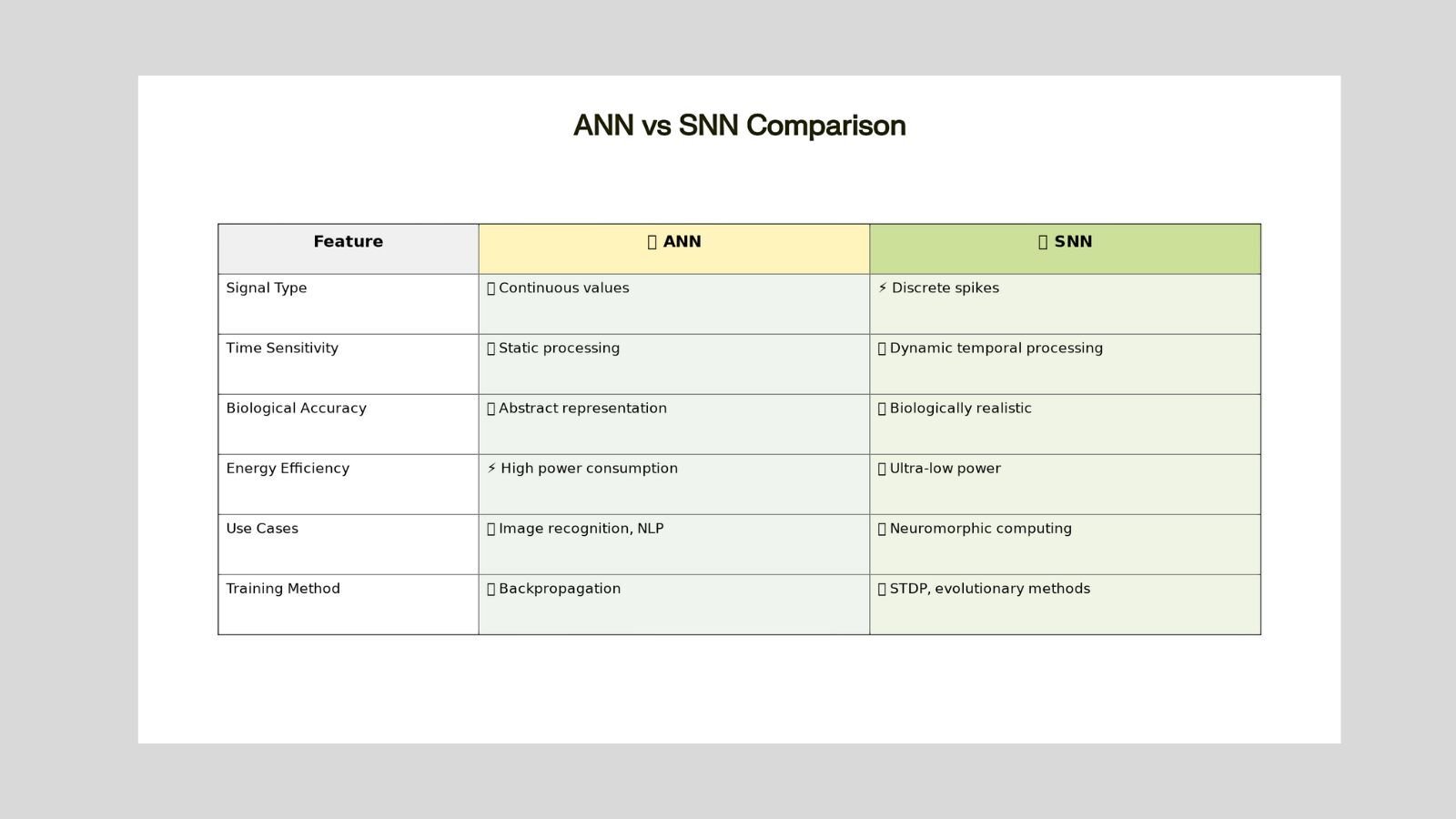
Understanding Artificial vs Spiking Neural Networks: Key Features and Real-World Applications

What Makes ANN Different from SNN? Key Features Infographic
For understanding of the key differences between Artificial Neural Networks (ANN) and Spiking Neural Networks (SNN), see the summarized table below.

Companies and Real-World Products Using Artificial Neural Networks and Spiking Neural Networks
An artificial neuron is inspired by biological neurons and consists of input signals each multiplied by weighting factors. The sum is processed through an activation function that determines the neuron's output. Neurons are connected in layers — input, hidden, and output — through which information is processed. The connection weights are adjusted during the training phase by algorithms such as backpropagation, enabling the network to learn and generalize.
-
Google: Image recognition, autonomous driving, Google Assistant (ANN)
-
Amazon: Alexa, supply chain management, product recommendations (ANN)
-
Apple: FaceID, Siri, healthcare AI applications (ANN)
-
Intel: Loihi neuromorphic chips for robotics, wearable sensors, edge AI (SNN)
-
BrainChip & Renesas: Akida chips for IoT devices, industrial automation, autonomous systems (SNN)
-
Innatera: Ultra-low power microchips tailored for sensor processing in healthcare and industrial IoT (SNN)The key to innovation in artificial intelligence lies in embracing diversity.ANN is the reliable workhorse for handling massive datasets, providing fast, precise computation required in many machine learning applications, while SNN enables breakthroughs where biological fidelity, energy efficiency, and real-time dynamic processing are critical, such as smart robotics and IoT. Increasingly, hybrid approaches combining ANN and SNN technologies deliver the best of both worlds.When deciding on the right neural network architecture for your AI project, carefully evaluate your requirements and how you want your system to "think". The future of AI is at the intersection of bio-inspired computing and advanced machine intelligence.Want to dive deeper into how spiking neural networks work and why they're biologically inspired? Read "What are Spikes and why are They Special?"
Conclusion and Future Challenges
Artificial Neural Networks (ANN) and Spiking Neural Networks (SNN) represent two complementary paradigms in the field of artificial intelligence, characterized by different mathematical models, coding schemes, and learning systems. ANNs rely on continuous activation functions and differentiable algorithms such as backpropagation, making them highly efficient for tasks like classification and natural language processing where large datasets are available.
SNNs, modeled after biological neurons, use temporal coding of discrete events (spikes) which enables a highly efficient event-driven computing paradigm with low energy consumption. This is especially valued in neuromorphic hardware and real-time applications such as robotic control and IoT sensors. However, the complexity of training SNNs due to the non-differentiability of spike signals and the lack of standardized training frameworks represent major technical challenges.
The further development of neural networks will likely proceed through hybrid models that combine the strengths of ANNs for deep learning and high parallelism with SNNs for temporal sensitivity and energy-efficient event-driven systems. Additionally, research on converting trained ANNs into SNNs will open new doors for practical applications in various fields with high demands for energy efficiency and speed. Understanding the fundamental differences and synergies between ANNs and SNNs is crucial for designing future AI solutions that balance power, efficiency, and complexity.

